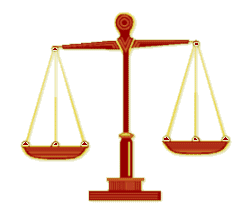Civil law facts for kids
Civil law is a type of legal system. It is different from common law, which is another main legal system. Civil law started in ancient Rome. Many countries use civil law. These include Germany, France, and many former colonies of European countries. It is also used in Latin America, parts of Asia, and some African countries. Around 150 countries worldwide mostly use civil law systems. About 80 countries use the common law system.
Contents
History of Civil Law
Ancient Roman Beginnings
Civil law gets its name from its origins. In ancient Rome, it was called Latin: jus civile, meaning "civil law." This system began around the 2nd century BC during the Roman Republic. By about 27 BC, legal experts became very important. These experts were called jurists. They were often from the upper classes. Jurists gave advice to people and helped judges during trials. A key part of Roman law was that it did not rely on past cases. Instead, it focused on the facts of each new case.
Development Through the Ages
In the 6th century, Emperor Justinian created the Corpus Juris Civilis. This was a simpler collection of Roman laws. The Byzantine Empire used it. The medieval Church also based much of its Canon law on Roman law. Ancient Germanic law, written between the 5th and 9th centuries, also borrowed ideas from Roman civil law.
Civil law grew in Europe during the middle age. This was around the same time common law was developing in England. During the Renaissance, England's common law system took some ideas from civil law. For example, Equity in English law is based on civil law ideas. Other parts of civil law were used in maritime law (laws about the sea), wills, trusts, and estates. The Napoleonic Code also used many Roman law ideas. It greatly influenced legal systems across Europe.
How Civil Law Works
Rules and Codes
Civil law is built on rules and concepts from Roman law. These rules and principles are written down in special books called legal codes. These codes are available for everyone to read. This means both citizens and legal professionals can find them. These codes clearly explain everyone's rights and duties.
Role of Judges
In civil law, judges have a different job than in common law. In criminal cases, judges find the facts of a case. Then, they use the rules from the legal codes. In many civil law countries, judges also bring the formal charges against someone. Unlike common law, civil law does not use legal precedent. This means past court decisions do not control future cases. Instead, the legislature (the law-making body) creates statutes (written laws). Judges then apply these statutes to each case. They look at the written laws, not at what happened in earlier cases.
Main Types of Civil Law Systems
Legal experts group civil law systems into different types. Here are the main ones:
- Napoleonic: This type is used in France, Italy, the Netherlands, Spain, and many countries in Latin America. It is also found in places like Quebec (Canada) and Louisiana (U.S.).
- Germanistic: This group includes Germany, Austria, Switzerland, Japan, South Korea, and many countries in Eastern Europe.
- Nordic: This type is used in Denmark, Finland, Iceland, Norway, and Sweden.
Related pages
- Biblical law
- Roman law
- Sharia law
- Canon law
- Napoleonic Code
- Maritime law


